
Historic Changes in American Mixological History
Like all human history, that of American drink-mixing if full of change. We often speak of drinks having been changed or dated-up by innovative bar-tenders. But, the big changes have often been broad and cultural ― and sometimes technological. These changes or shifts have often affected how we think and talk about drinks more than they have changed the constituent nature of the drinks, themselves. Five years, 1855, 1913, 1920, 1933 and 1969 serve as excellent emblems of the most consequential (good and bad) changes in American mixological history.
1855
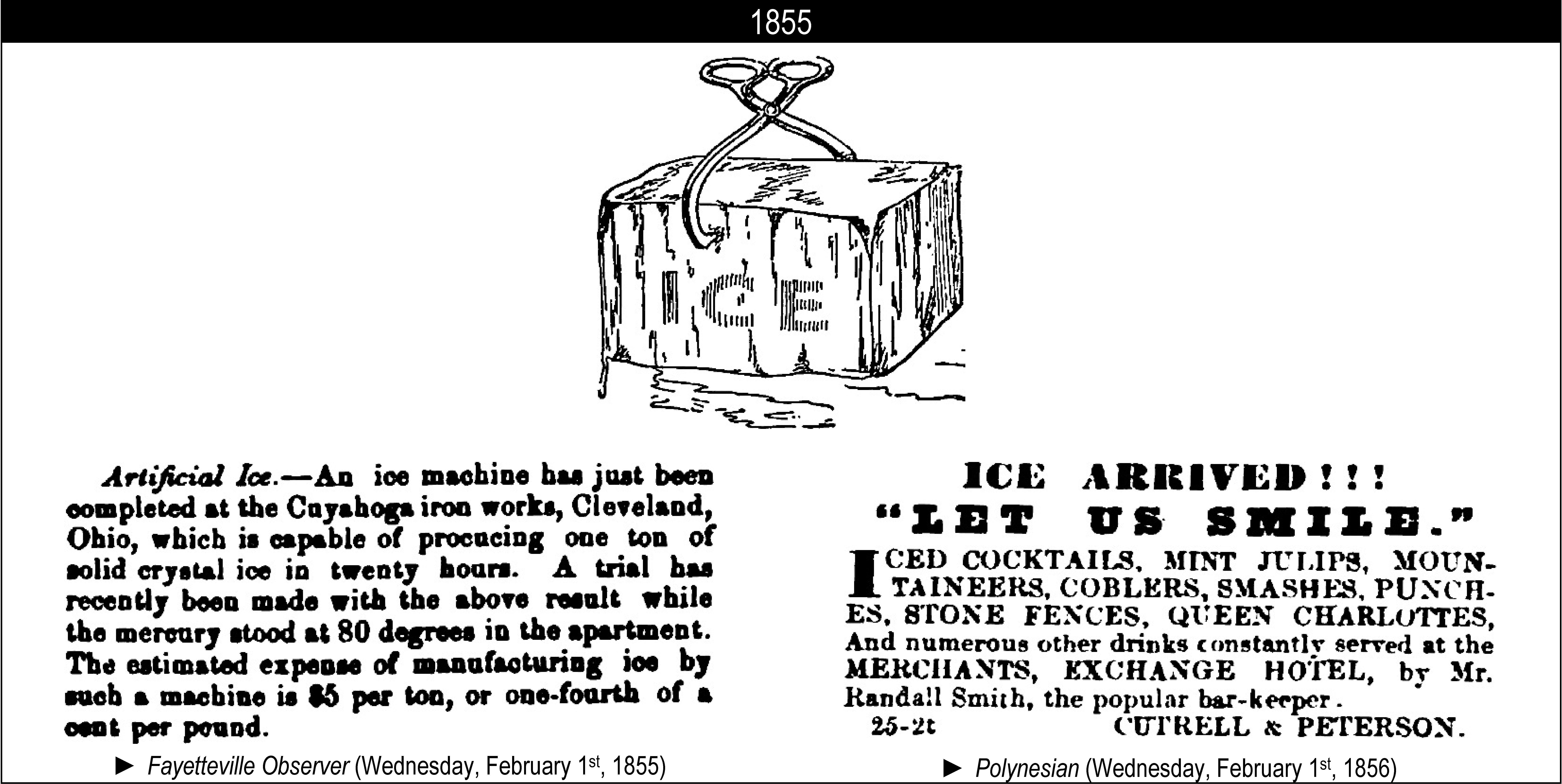
Before 1855, the ice used in making drinks was natural ice cut from frozen bodies of water in winter. Natural ice would be stored underground and sold throughout the year – in areas where bodies of water froze during winter. Even in those areas, having a piece of ice added to a drink made it more expensive. After 1855, it became possible to have cold drinks even in places like Hawaii, Cuba and Brazil.
Because of its limited availability and shrinkage rate, the cost of natural ice meant that before 1855, the modern methods of ‘stirring’ (with ice and then straining the ice out of it) and ‘shaking’ (also with ice and then straining the ice out of it) were not financially viable methods and were not used in professional bars or taverns.
Also, for artificial ice-making to become an industry, as it did in 1855, plenty of purified or distilled water would need to be available at little cost. The falling cost of pure water also made the use of simple syrup in the hospitality industry economical.
One effect of these historic changes in 1855 that is clearly visible to this day is the difference between the once famous Whiskey Cocktail and the now famous Old-Fashioned Whiskey Cocktail. If simple syrup or the ‘stir’ method is used in making a Whiskey Cocktail, there’s nothing old-fashioned about it. That is fine ― the Whiskey Cocktail is much better, according to most students comparing both, than the Old-fashioned Whiskey Cocktail.

1855 can be argued as the most consequential year of change in American mixological history that had a positive overall effect.
1913
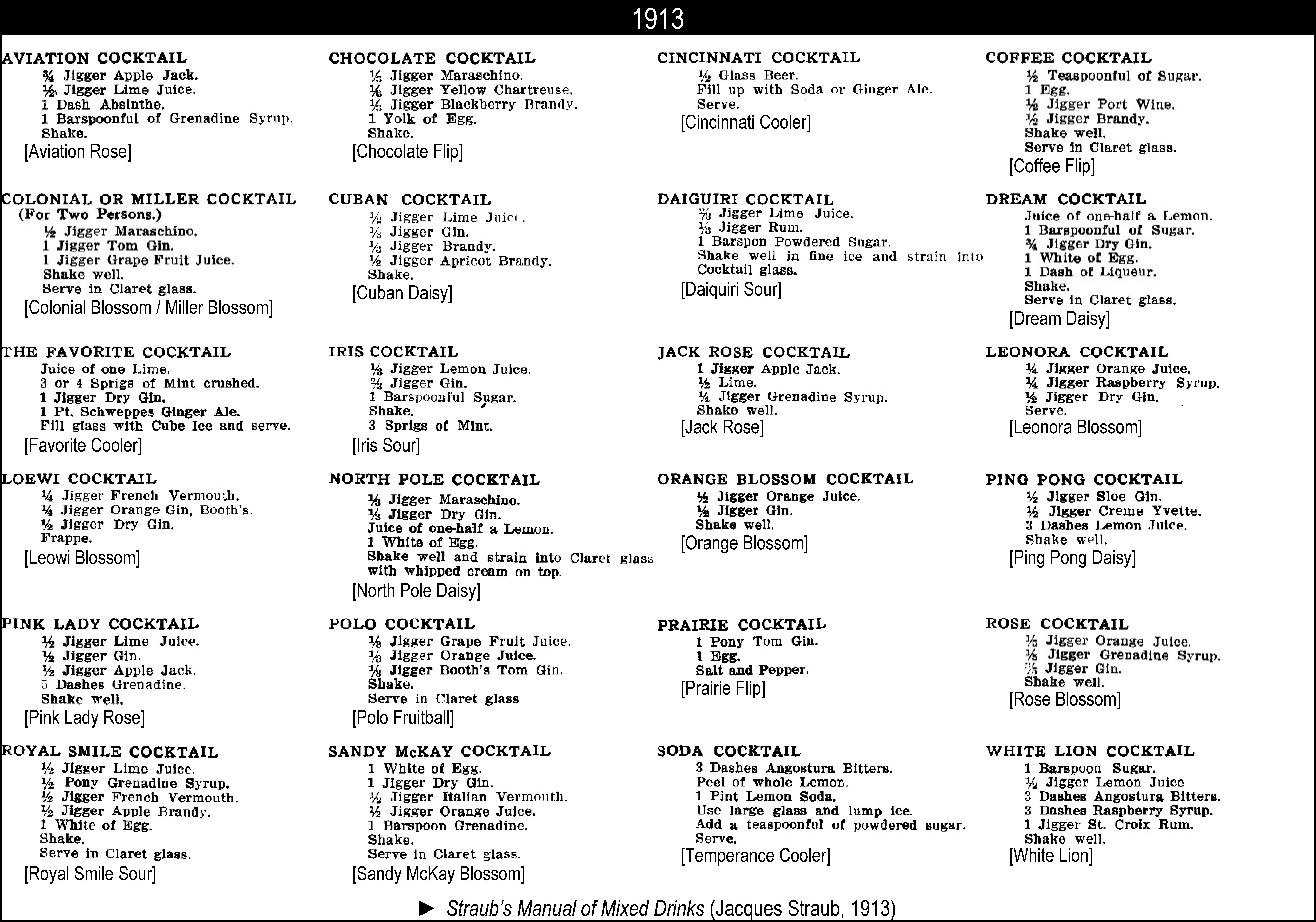
Before 1913, a few drinks appeared in drink books that were called ‘cocktail’ even though everyone seems to have known they weren’t cocktails. For example, in Jerry Thomas’ book published in 1862, there is the Soda Cocktail. It would have been understood in 1862 that it is not a cocktail, but the soda water is sweetened and bittered – reminiscent of turning liquor into a cocktail by sweetening it and bittering it. In the 1887 book published under Jerry Thomas’ name, there is the Coffee Cocktail. The author felt the need to acknowledge that the name “is a misnomer” because the drink is neither coffee nor a cocktail. Some food items were called ‘cocktail’ simply because they were served in cocktail goblets. Fruit cocktail, shrimp cocktail and oyster cocktail are all items named after being originally served in cocktail goblets.
The time when everyone understood that the items I have mentioned where named ‘cocktail’ not because anyone thought they were cocktails, but rather for some superficial similarity to the actual type of drink, seems to have ended around 1913. In that year, Jacques Straub published a drink book with a considerable number of drinks in the cocktail section of his book that bore the word ‘cocktail’ in their name that no bar-tender (and probably very few drinkers) from even a decade earlier would have considered a cocktail – and without Straub making even the slightest comment about them. The true cocktail was historically also called the bittered sling. Shortly after 1905, some drink books began to include in their cocktail sections what would be cocktails, except that they were un-bittered. Unbittered slings are still slings and belong to the same larger genre as do true cocktails. But, it wasn’t until Straub’s book that large numbers of drinks containing enough juice or other ingredients to prevent their being even slings were included in the cocktail section of a book.
There is no surviving, published, contemporary critique of Straub’s inclusion of the above drinks as cocktails. Other typological names previously existed for most of the non-cocktails that Straub (or his sources) erroneously called ‘cocktail’. No one seems to have pointed that out. That silence in the record means that the era of the true cocktail being king in American drinking culture seems to have been dead by around 1913.
1920
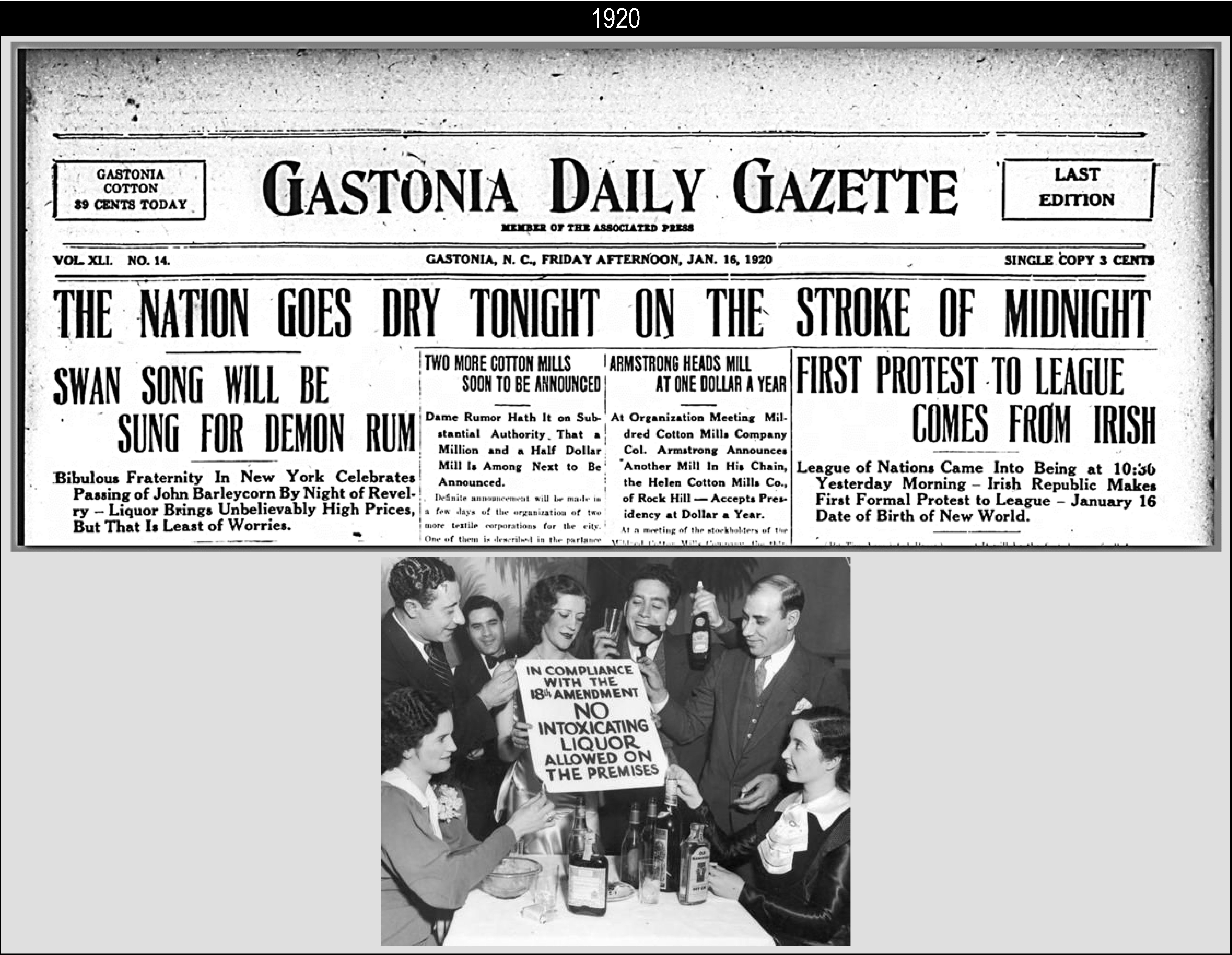
The Volstead Act going into effect on January 17th, 1920 didn’t just end legitimate training of professional bar-tenders according to the historical culture and standards that the hospitality industry had inherited and improved since the 1600’s. For the American middle class, it also transformed the act of walking into a bar from being something that could hurt one’s reputation into being a fun act of adventure that had the added aspect of seeming rebellious. These millions of new Americans entering the bar consumerate forever changed it – and the drinking preferences of Americans. They had little personal experience or knowledge of liquor and American mixological tradition. They had the vague understanding that mixing high-quality spirits into cocktails was a sophisticated preference (for the same reason many chefs de cuisine insist on applying few ingredients and simple techniques to high-quality ingredients). As a whole, the middle-class is in love with the idea that its tastes are sophisticated. The speakeasy crowd immediately considered themselves cocktail drinkers – even though many of them had no palate for true cocktails. The speakeasies were only too happy to call everything a cocktail. This class and generation of people came to call any drink stirred, or shaken, and served as a single-portion drink a ‘cocktail’.
Everyone today who thinks of cocktails as being anything along those lines, and who uses the word ‘cocktail’ in any way to suggest sophistication, owes their mixological, and bar-cultural, concepts to those newbies in 1920. It is apt that among such, the faux-speakeasy of today is such a successful business model.
In fairness to the newbies of 1920, it should be pointed out that Straub’s 1913 book proves that they did not fabricate the gloss on the meaning of the word ‘cocktail’ by themselves.
1933
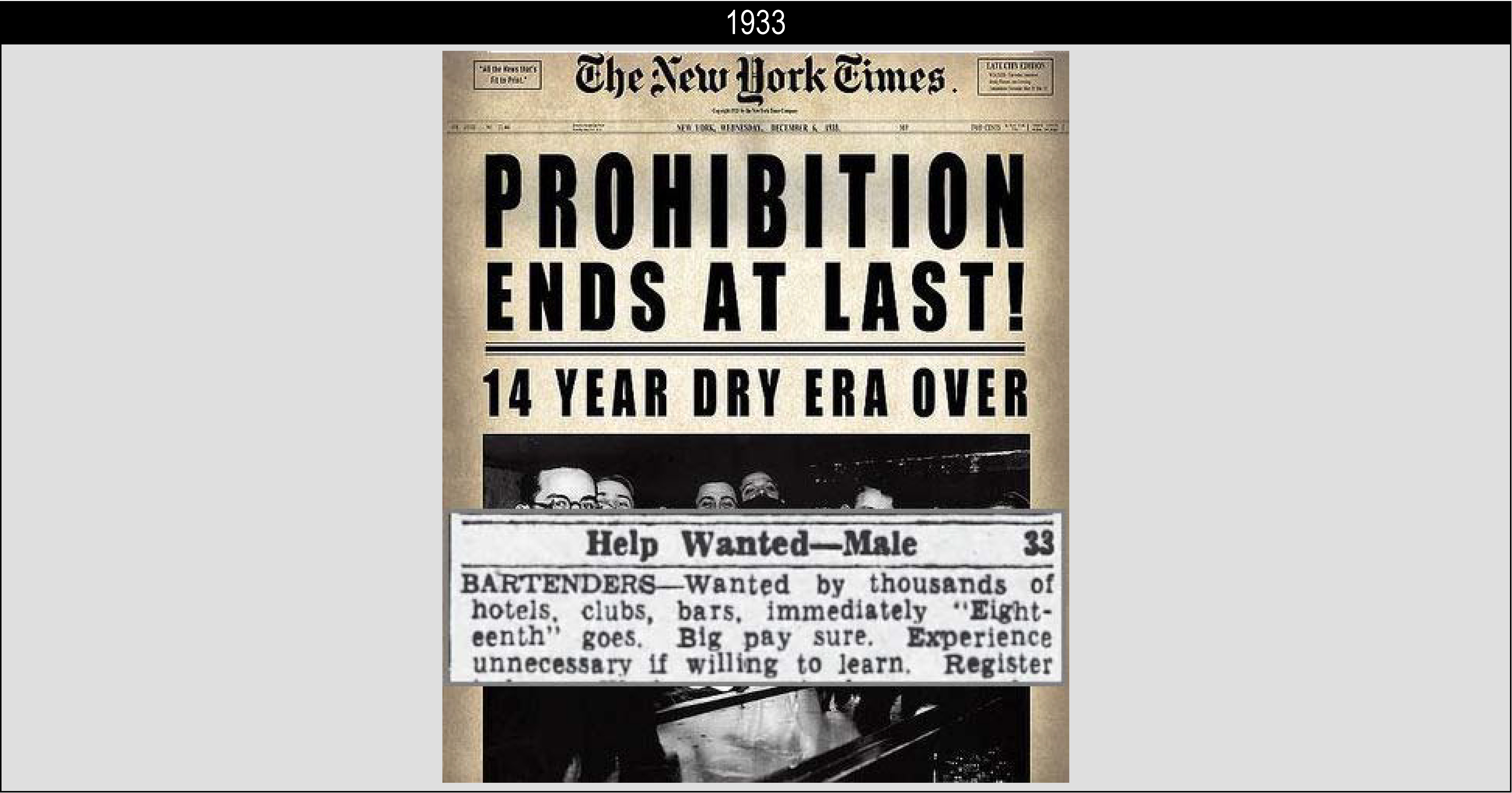
Perhaps even more consequential than the enactment of the Volstead Act was its repeal. For the better part of fourteen years, there had been no industry training of professional bar-tenders in the U.S.A. Fourteen years is a long time for a working age person not to develop and new career path. Even if some small number of pre-1920 bar-tenders came back to tending bar in 1933 and 1934 (and there is no evidence that very many did), their presence in the field would have been overwhelmed by more than a hundred-thousand new-hire bar-tenders. These new-hire bar-tenders had none of the old mixological concepts. The customers they were serving had speakeasy-era concepts, and so service was naturally matched to to those concepts. The idea of the bar-tender as a relatively little-trained person who pours liquor quickly and memorizes recipes was born in 1933.
Every living bar-tender, or former bar-tender, was trained by people in a chain of people that goes only as far back as the end of 1933. Though no other result was possible by then, the repeal of prohibition played at least as big a role in killing off the older, more knowlegable, American mixing culture as enacting it – probably greater.
1969
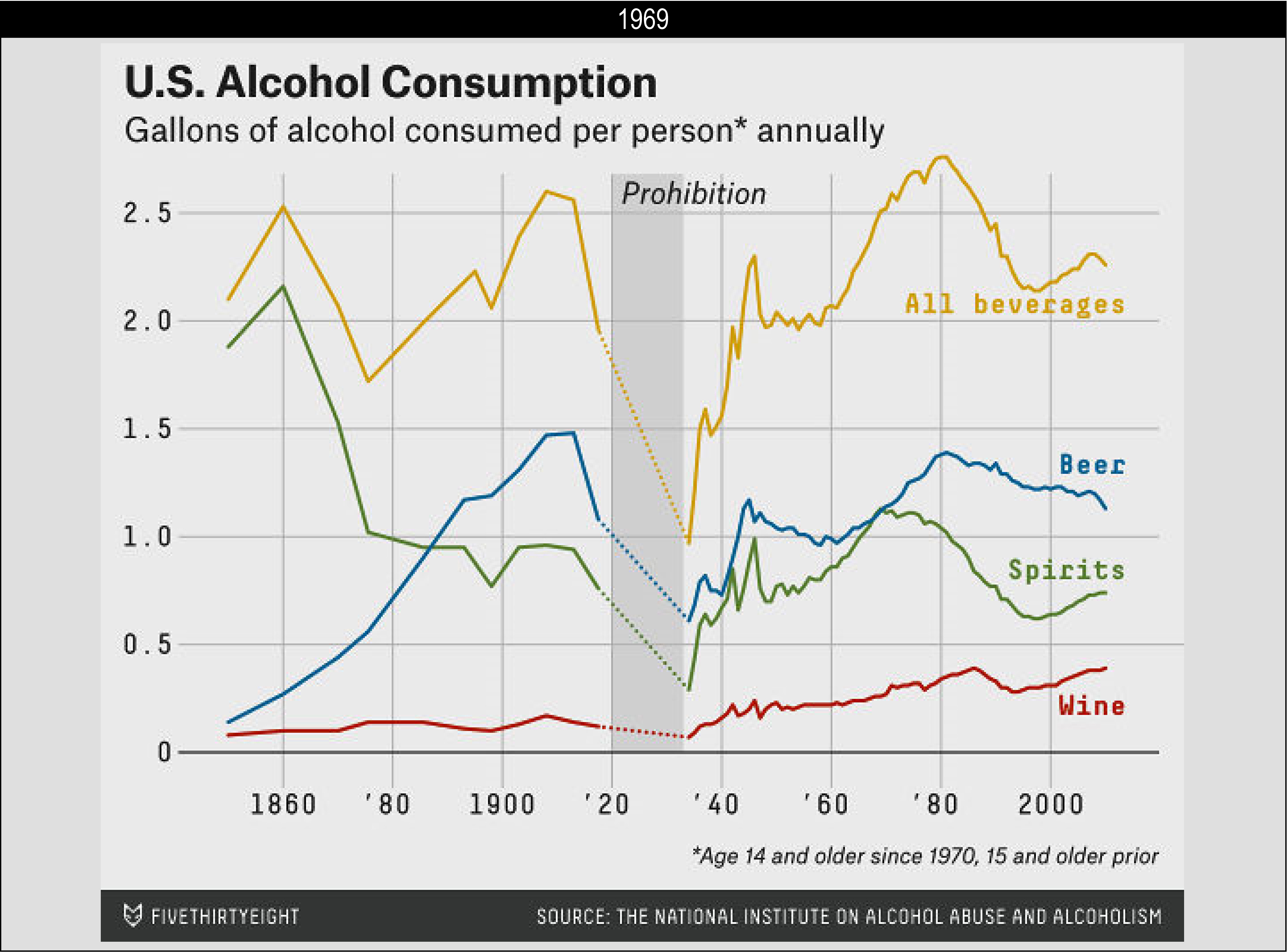
Between the end of prohibition and the year 1968, the net rate, per-person, of consumption of liquor in the U.S.A. rose. Between the year 1969 and the mid-1990’s it declined. This phenomenon did not occur for other types of alcoholic products. The rates of consumption for beer and wine continued to rise past the year 1968 and did not decline for either until the 1980’s. This means that the per-person decline in liquor consumption that started in the year 1969 was special to liquor and, therefore, probably due to special social factors. Young adults in the late 1960’s and early 1970’s probably associated ‘Scotch on the rocks’ and ‘Martinis’ with older generations of socially conservative men whom they considered responsible for repression and military conflict.
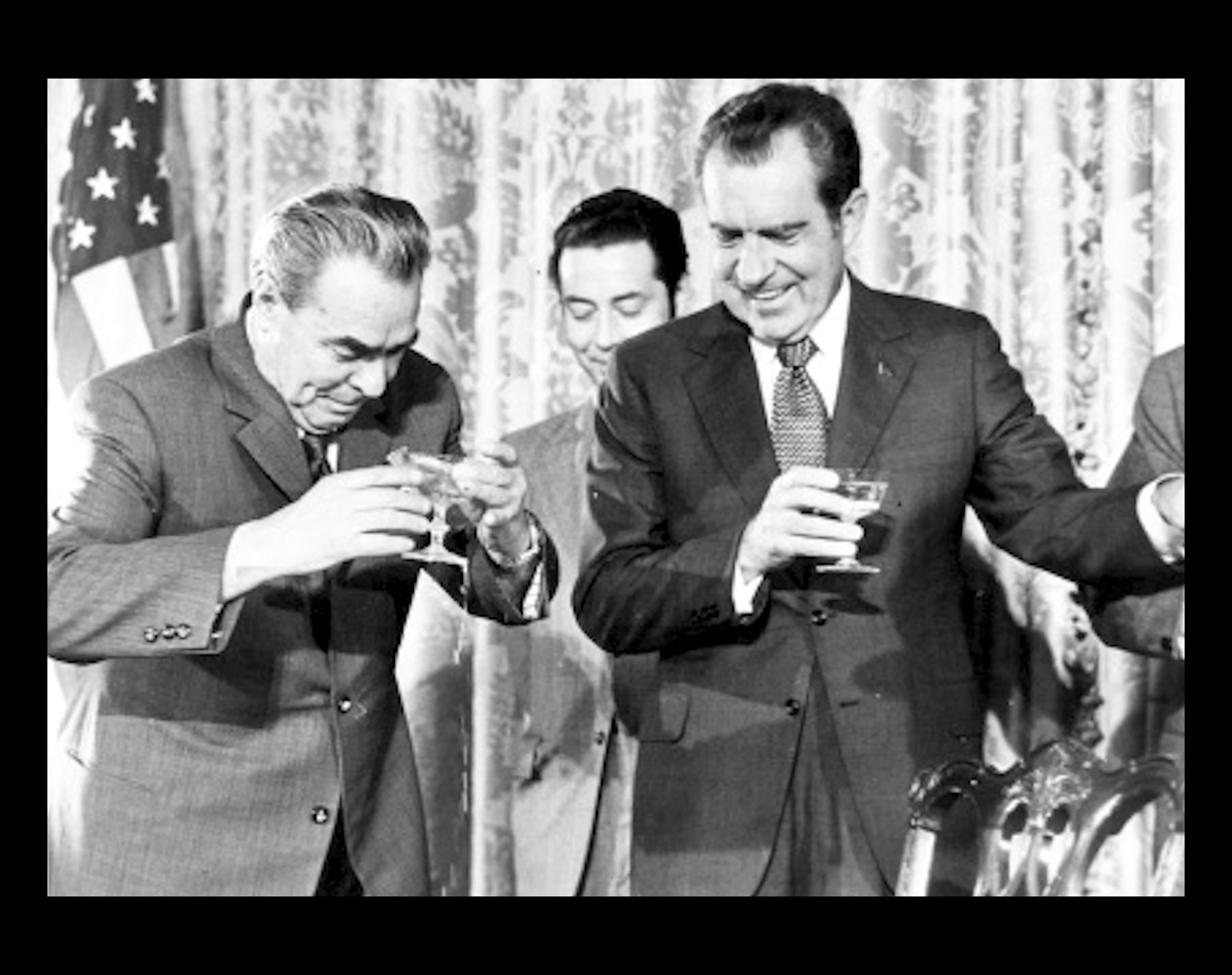
The middle-class of that generation that failed to embrace liquor in the 1960’s and 1970’s would later, by about the year 1980, embrace alcohol consumption – but their preference was then for wine. By being largely absent from the liquor consumerate and American bar service, those industries atrophied a bit. With an entire new generation of liquor drinkers effectively missing, mixological practice became less of a focal point for the hospitality industry. It is no random coincidence that the near universal substitution of low-quality ‘mixers’ for fresh juices and other authentic ingredients occurred during this time.
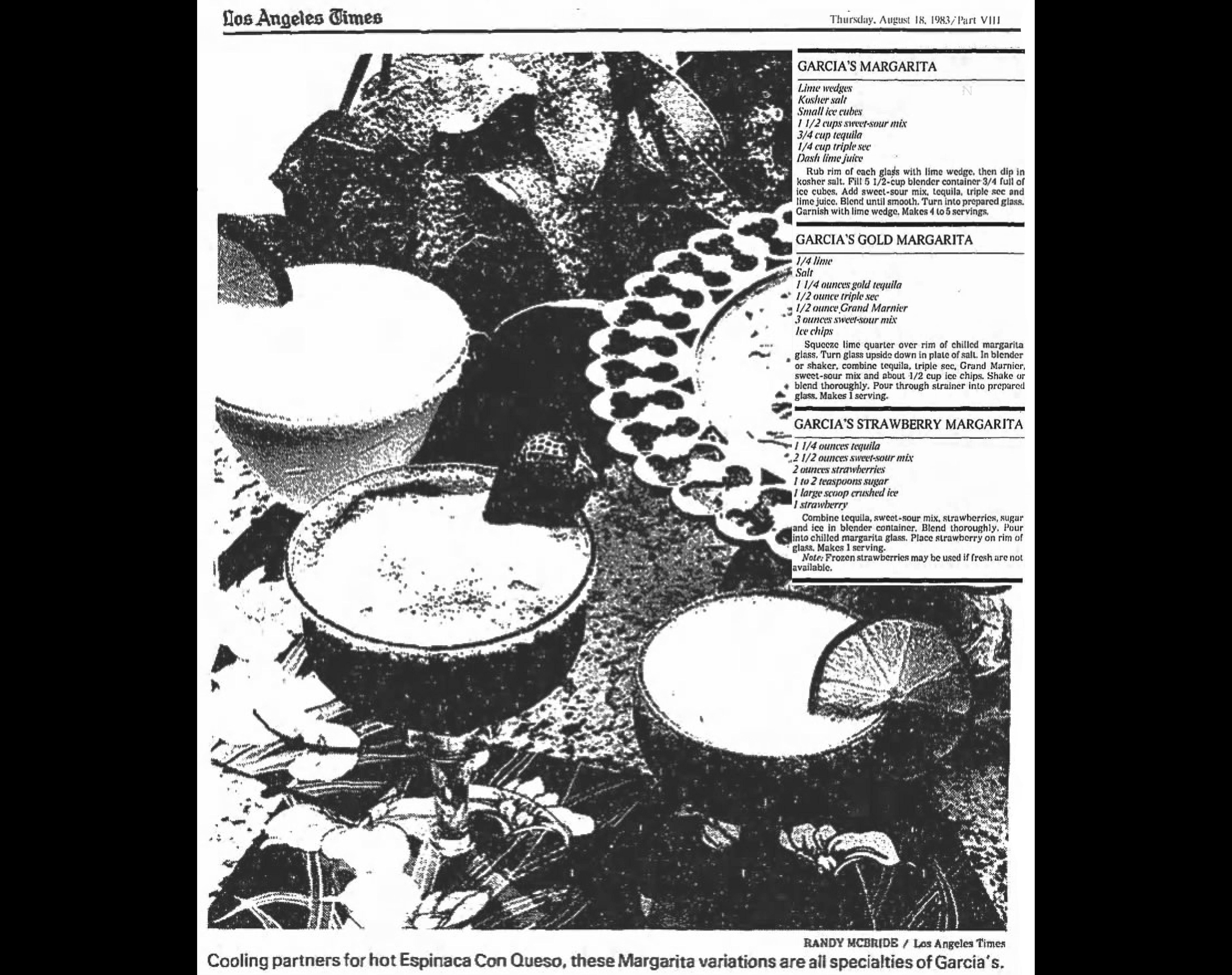
This period continues to affect us today. In the late 1990’s, a newer generation of drinkers that had grown of age without negative associations to liquor and mixed drinks appeared in American bars. As soon as the rate of consumption of liquor began to rise again (as it did in the late 1990’s), some portion of that new demand was naturally for high-quality drinks. As always, industry follows the consumers. We in the industry may like to believe that it was a handful, or generation, of bar-tenders that lifted the standards of both the industry and the drinkers, but that is putting the cart before the horse. If any given person now associated with ‘raising the bar’ since the late 1990’s had not been present, someone else would have done it. By about the year 2005, emphasis on fresh, authentic ingredients became a focus of American bar practice in much the same way that fidelity to a spouse becomes the focus of someone who has recently sworn never to cheat again. It was a little bit embarrassing to make a point of pride out of what should never have been anything but assumed, minimal standards. Also, the use of fresh ingredients became mistaken for mixology (meaning the science of mixing). But, to use an analogy, insisting on the use of only the purest chemicals and high-quality laboratory equipment is not the same thing as understanding chemistry. This lack of actual mixology, plus reliance on memorized recipes, led to many bar-tenders to feel that there is no such thing as mixology and to denigrate any use of the word. This was not isolated from other bar-tenders and businesses using the word too-loosely in self-application. All that aside, there has been some improvement since about the year 2000. Instead of a return to the old tradition, though, what has been recovered has been the practices of the benighted speakeasies of the 1920’s, and those of the amateurish hordes of new-hire bar-tenders in the 1930’s.
There is still much recovery of tradition and learning that must happen in the industry to come equal with the knowledge and practices that were developed by American bar-tenders and drinkers before they began to tarnish around the year 1913 and fade after the year 1920. There is no reason that traditional, pre-1913 mixology can even be further improved with modern product quality and availability. But, as long as most bar-tenders memorize recipes and call all mixed alcoholic drinks ‘cocktails’ [as only two very telling symptoms], it must be concluded that our mixology is still vastly benighted when compared to that of around the year 1900.